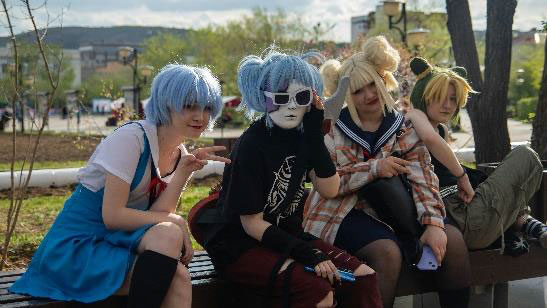Friending

What is friending?
Today, people think of social media when they hear the word “friending,” but in ancient times friending meant “to befriend.” It’s a verb, so befriending someone requires some action to move from acquaintance, to friend, to good friend. Friendship can be a strong and happy alliance between like-minded individuals. Friends often meet outside of work or school for coffee, a meal, or another social activity. A good friend is someone who knows your faults as well as your strengths and still likes you. Good friends will help a friend move or drive them to the airport. Good friendships are precious.
There are all kinds of friends.
Some you may have known since early childhood. Others you know from work or school or choir, or you met at a con and just clicked. Family members can also be friends, and even animals; ask any pet owner. Online friends may never meet in person, but still share common interests.
Not everyone you know is a friend.
Some are acquaintances you’ve run into a few times but don’t know well. Others you see at the office or school, but not socially. Just because you see someone every day, like your barista or bus driver, doesn’t mean that you’re friends, even if they’re nice to you. Lots of people are just nice to everyone, even their acquaintances, because that’s the kind of person they are. It doesn’t necessarily mean they want to become closer. Others are nice because it’s their job to be nice to customers. People can be polite on the surface without wanting to be true friends. If you already have a good and trusted friend, you are fortunate. If you’re looking for a friend, start with PAL: Play it cool, Ask, and Let it be.
PAL
Play it cool
The P in PAL is for Play it cool.
You won’t find or keep a friend using a choke hold. Anyone who tries too hard can become intrusive, and others are put off by their smothering ways. Daniel Tammet, author and autistic savant, wrote, “I had eventually come to understand that friendship was a delicate, gradual process that mustn’t be rushed or seized upon but allowed and encouraged to take its course over time. I pictured it as a butterfly, simultaneously beautiful and fragile, that once afloat belonged to the air and any attempt to grab at it would only destroy it.” Be patient.
Why do you want a particular person to be your friend? Be honest with yourself. If it’s because they’re popular and you want to gain acceptance by association, reconsider. No one wants to be used, even popular people, and this kind of connection is rarely equal or reciprocal. Sometimes, an unpopular person is accepted as a fringe member of clique so the others have someone to look down on or boss around. This is not a happy position to be in.
Rather than trying too hard or fawning over a popular person, look around for someone who likes the same things you like and who could be a friend on equal footing. Shared interests start many friendships. You might meet someone in a class about your favorite subject, where it’s natural to strike up a conversation. Talking about things you both like is a good way to lay the groundwork for friendship. Remember to play it cool and don’t try to push it.
Ask
The A in PAL is for Ask.
If you always wait for the other person to initiate, you could wait a long time. It may not be easy, but if you want to be friends with someone, you may have to ask. Think of something low key, like hanging out after work or attending a lecture about the interest you share. Don’t try to impress them with expensive, hard-to-get tickets for a concert or big game. If they say yes to doing something with you, it should be because they like you, not because they couldn’t resist the temptation of the event. Don’t try to purchase friendship; it’s never a good buy.
If you ask a friend to join you in a social event, and they say no, don’t immediately jump to offering a different day and time, pressing them into a corner. Just say, “Okay, maybe another time,” and back off for a while. Another time, try inviting them to a different kind of activity. If they say no to a second invitation, check out their facial expression and body language. If they seem to be in a hurry to end the conversation, glancing away and checking their phone, don’t ask again. If they really want to hang out with you, they can ask you. On the other hand, if they appear genuinely disappointed that they have a conflict, try inviting them one more time. After a maximum of three invitations and three “no” answers, it’s time to move on. Play it cool.
Let it be
The L in PAL is for Let it be.
If a friendship you hoped for didn’t work out, don’t obsess on the person and keep badgering them with invitations. Pushiness gets annoying fast, and they will avoid you. Just back off and quit asking. Not everyone you want to be friends with will become your friend. That doesn’t mean there are no friends for you, just not this one. Let it be and look elsewhere.
Friends are out there.
Don’t give up on your quest to find a friend. There are many others like you who would love to have a friend they share interests with, someone they can talk to about the things that fascinate you both. They are out there, maybe on the internet, at a convention, or a class or lecture about a favorite subject. When you find them, remember PAL: Play it cool, Ask, and then Let it be. A good friend is worth waiting for. Your future friend will be glad you found them!
Based on an excerpt from a chapter in Independent Living While Autistic by W. W. Marsh


